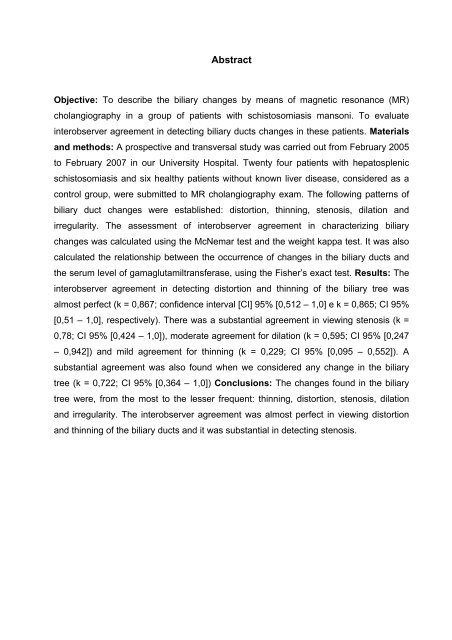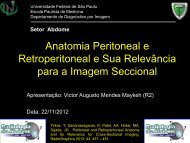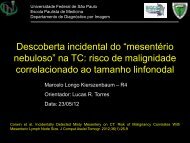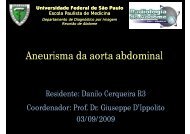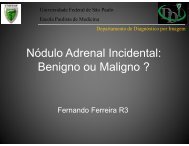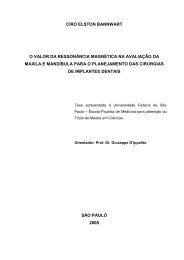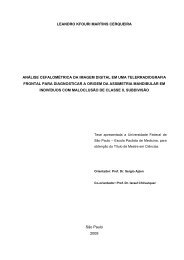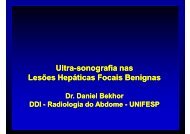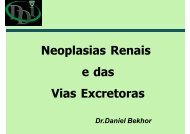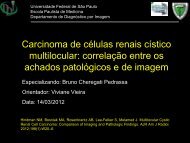danilo moulin sales correlação interobservador ... - (DDI) - UNIFESP
danilo moulin sales correlação interobservador ... - (DDI) - UNIFESP
danilo moulin sales correlação interobservador ... - (DDI) - UNIFESP
You also want an ePaper? Increase the reach of your titles
YUMPU automatically turns print PDFs into web optimized ePapers that Google loves.
Abstract<br />
Objective: To describe the biliary changes by means of magnetic resonance (MR)<br />
cholangiography in a group of patients with schistosomiasis mansoni. To evaluate<br />
interobserver agreement in detecting biliary ducts changes in these patients. Materials<br />
and methods: A prospective and transversal study was carried out from February 2005<br />
to February 2007 in our University Hospital. Twenty four patients with hepatosplenic<br />
schistosomiasis and six healthy patients without known liver disease, considered as a<br />
control group, were submitted to MR cholangiography exam. The following patterns of<br />
biliary duct changes were established: distortion, thinning, stenosis, dilation and<br />
irregularity. The assessment of interobserver agreement in characterizing biliary<br />
changes was calculated using the McNemar test and the weight kappa test. It was also<br />
calculated the relationship between the occurrence of changes in the biliary ducts and<br />
the serum level of gamaglutamiltransferase, using the Fisher’s exact test. Results: The<br />
interobserver agreement in detecting distortion and thinning of the biliary tree was<br />
almost perfect (k = 0,867; confidence interval [CI] 95% [0,512 – 1,0] e k = 0,865; CI 95%<br />
[0,51 – 1,0], respectively). There was a substantial agreement in viewing stenosis (k =<br />
0,78; CI 95% [0,424 – 1,0]), moderate agreement for dilation (k = 0,595; CI 95% [0,247<br />
– 0,942]) and mild agreement for thinning (k = 0,229; CI 95% [0,095 – 0,552]). A<br />
substantial agreement was also found when we considered any change in the biliary<br />
tree (k = 0,722; CI 95% [0,364 – 1,0]) Conclusions: The changes found in the biliary<br />
tree were, from the most to the lesser frequent: thinning, distortion, stenosis, dilation<br />
and irregularity. The interobserver agreement was almost perfect in viewing distortion<br />
and thinning of the biliary ducts and it was substantial in detecting stenosis.


